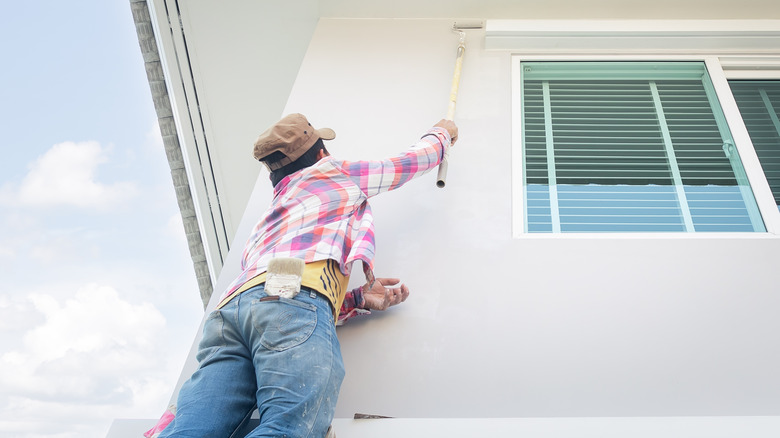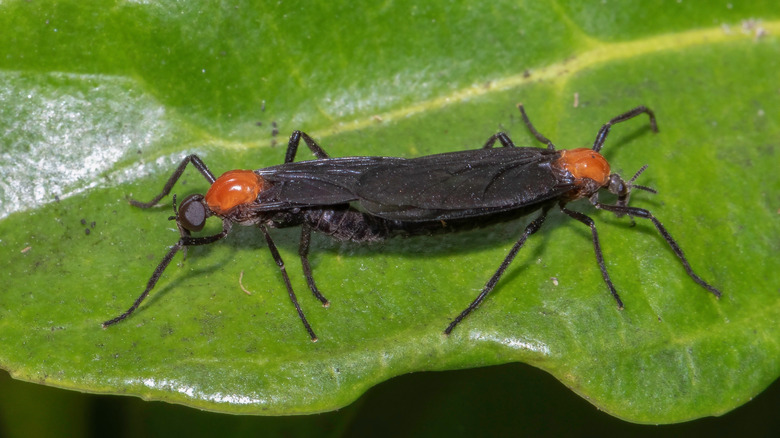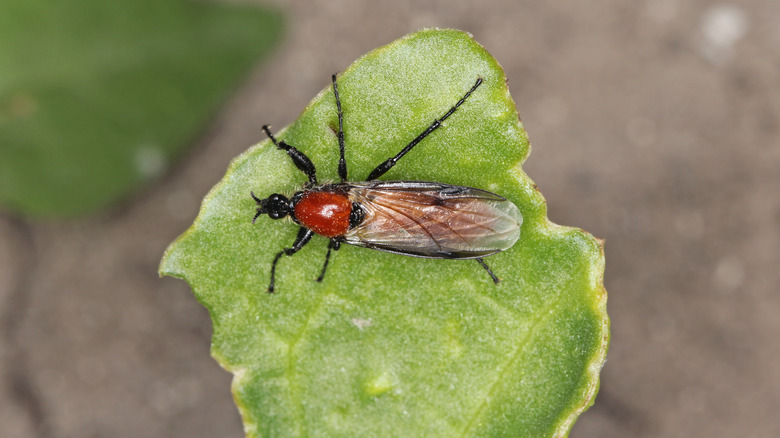Hold Off On Painting Your Home To Avoid A Mess With This Pesky Pest
Painting the exterior of the house so it looks like a pro did it is a tough enough job under normal circumstances. Climbing up and down the ladder repeatedly, balancing yourself near the top of the ladder to reach that tough spot, and avoiding a nasty sunburn are all difficult to handle. If you live in the Southeast, though, you may have another challenge in avoiding an invasion of lovebugs that interrupts your work. Lovebugs have a great name, but they can be quite a pain when you are trying to work outdoors. When they swarm, these insects are attracted to heat, light colors, and fresh paint, meaning they could become stuck against the side of your house, ruining all the work you did.
The lovebugs have a particular attraction to light colors on the side of the house. You certainly can't stop an occasional one of these insects from flying around and being curious about your exterior home paint job, but you can avoid major problems from a swarm by only doing this work at certain times of the day and year when lovebugs are far less active.
Because you only need to be repainting the exterior of your home every five to 10 years, it shouldn't be too difficult to avoid the busiest times of the year for lovebugs. Learning more about them and when they are active can help you avoid the issues that they can cause for you and your house's paint job.
When and where lovebugs become a nuisance for painters
How do you know if you are seeing these insects when you are preparing to paint? The lovebug is a member of the fly family with a primarily black body and a spot of red on its back. This insect looks a bit like a wasp, but it cannot bite or sting people. It primarily appears in the southeastern United States and throughout Mexico, especially around the Gulf of Mexico.
Lovebugs are most active during their mating seasons, when they tend to swarm. While mating, the back ends of the males and females stick together. Because of the way they mate, some people call them honeymoon flies, double-headed bugs, kissy bugs, and telephone bugs. As they are mating, lovebugs have an attraction to certain items, such as light-colored areas and heat. If you are painting your home during mating season in white or in another light color, and if the sun is shining on the side of the house that you are painting, you can expect to find lovebugs stuck in the paint.
The best way to avoid this issue is to paint during months when lovebugs are not in mating season. Mating season occurs a couple of times per year in most places, usually starting in the spring across late April and throughout May. They have another mating season in late August and September. We usually don't see much of them most of the rest of the year.
Are lovebugs able to damage a home's paint job?
You may have heard that lovebugs can damage the finish on vehicles because they have acidic bodies. However, you shouldn't have to worry about this problem at your home. These insects have a significant attraction to the smell of exhaust fumes from motor vehicles. This means they are constantly swarming around roadways, ending up crushed on the cars that are speeding through the swarm. The acidic crushed bodies, if left in place on the body of the car, can damage the finish. To avoid any damage, just wash them off immediately.
Fortunately, when you are painting your house or even after you've finished the job, as long as you don't crush swarms of lovebugs against your home, you shouldn't have to worry about their acidic bodies causing damage.
You then only have to worry about them ruining your paint job by becoming stuck when it's wet. Although it is best to avoid painting when these bugs are most active and mating, you may be in a situation where you cannot avoid it. During mating season, they are most active in the mid-morning and in the late afternoon. Exterior house paint usually dries to the touch in three to 10 hours. This means you could start your work after a swarm in mid-morning, paint for a few hours, and then hope everything dries before the mating swarm returns in the late afternoon.


